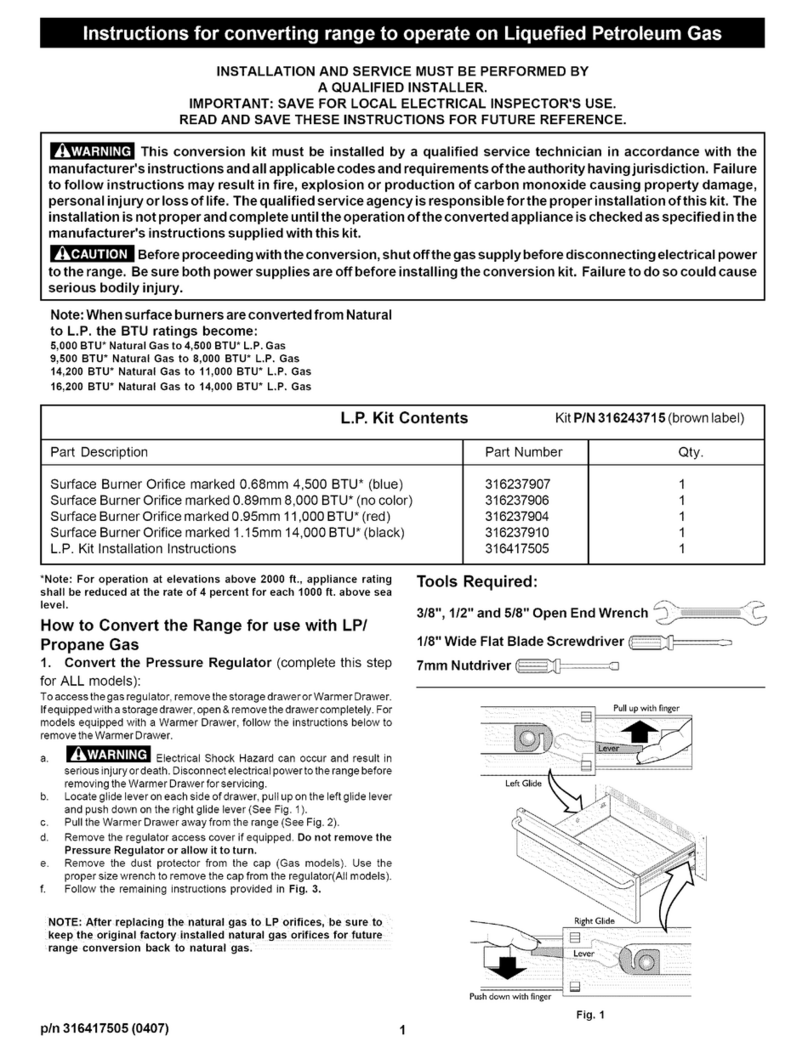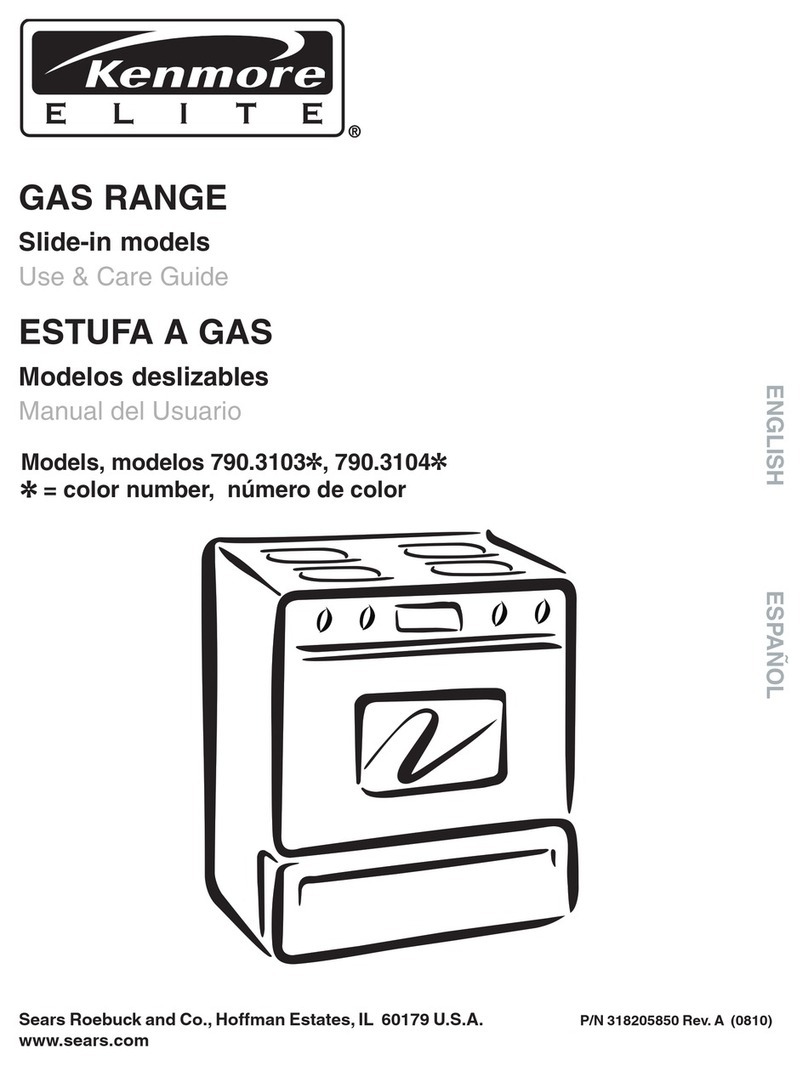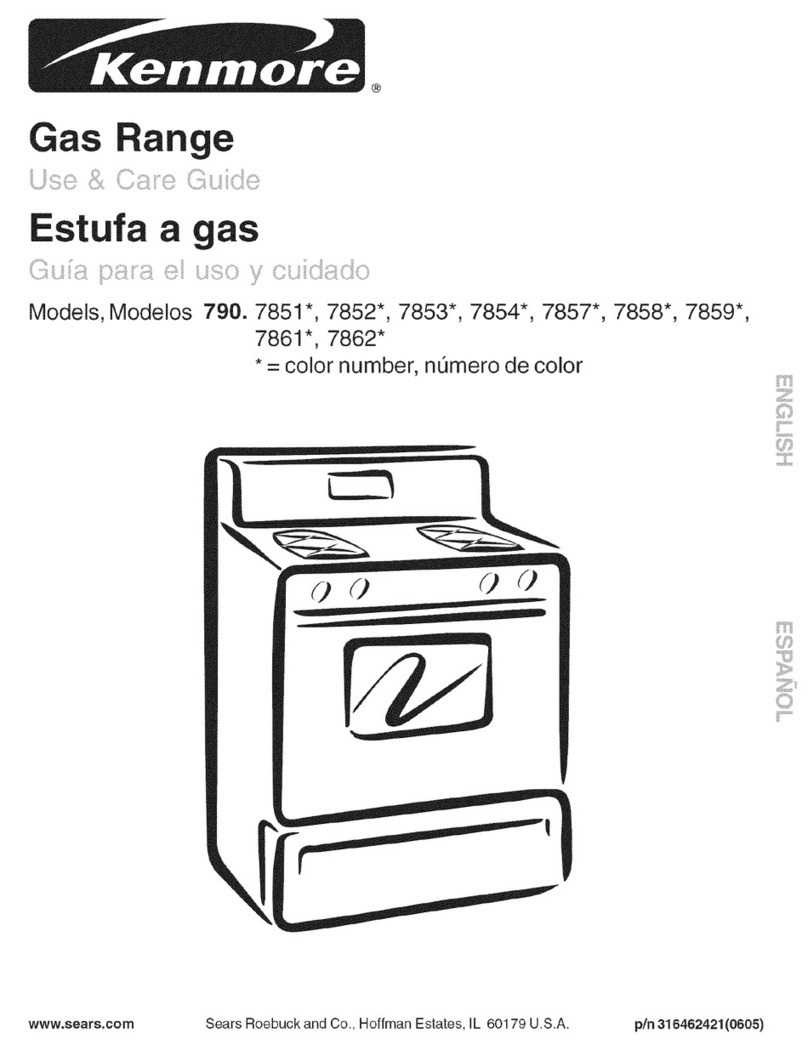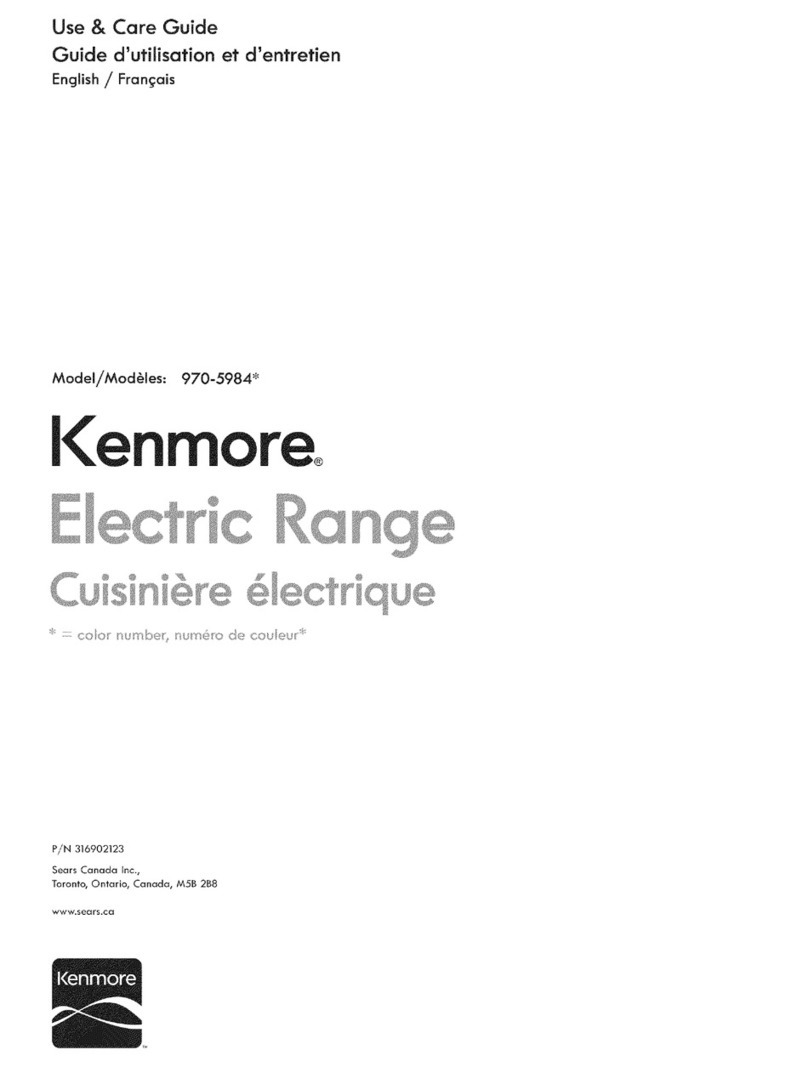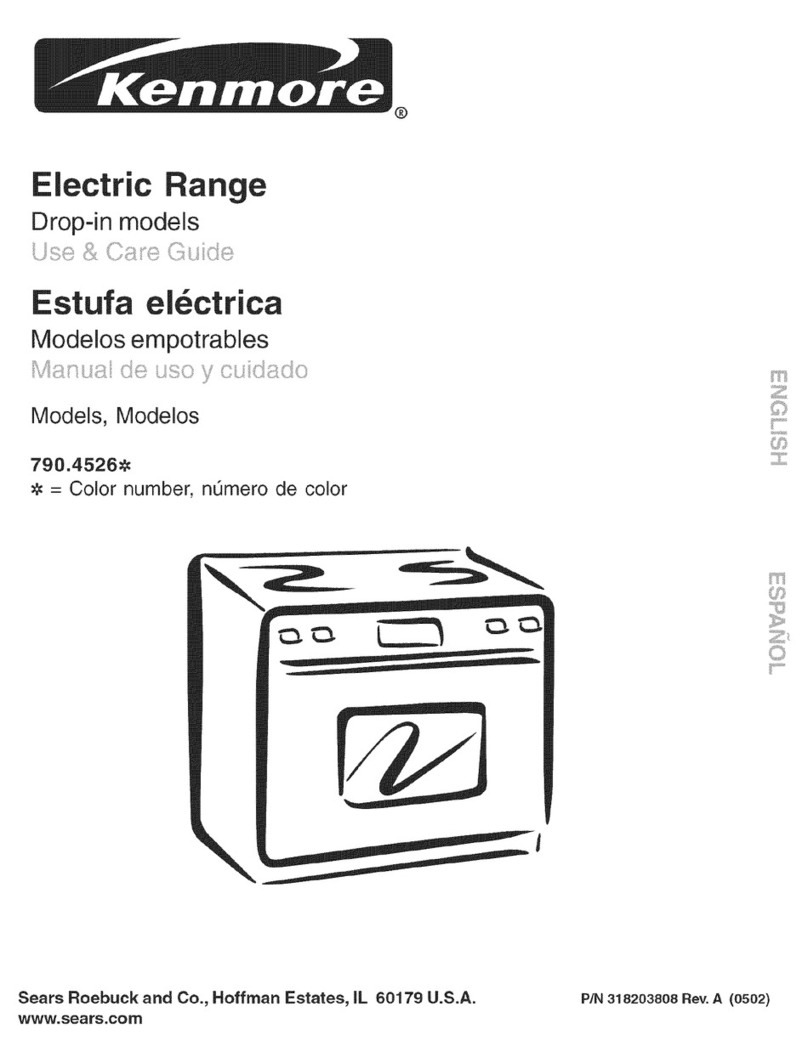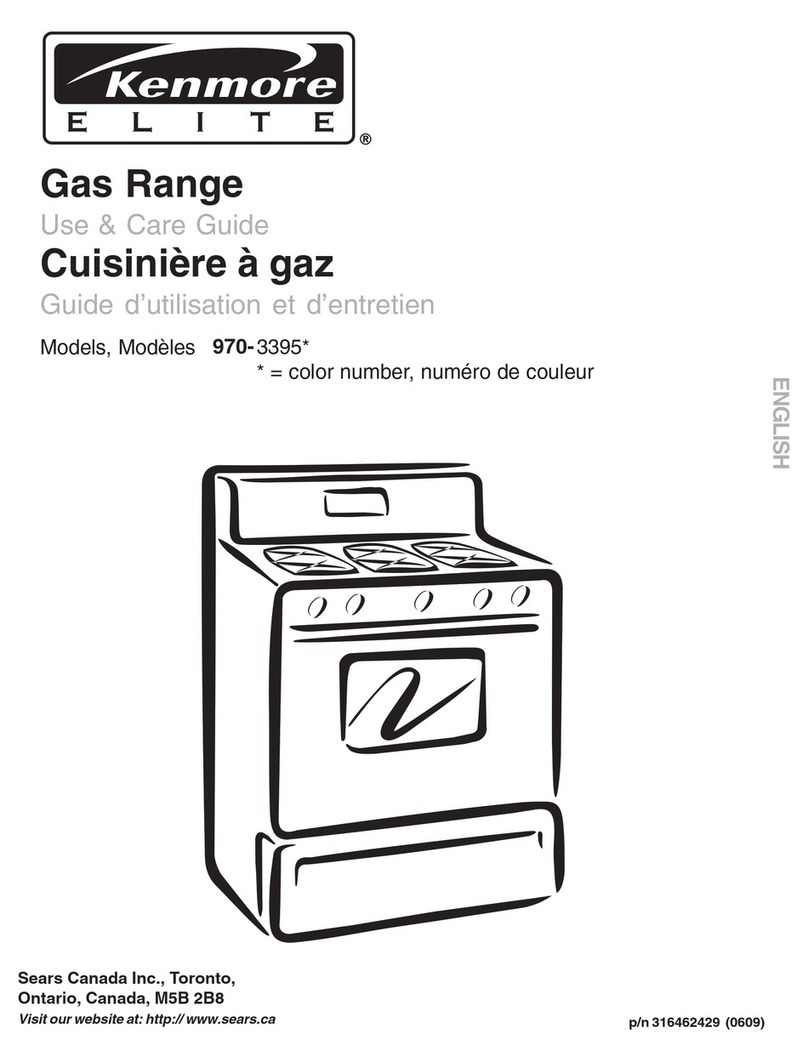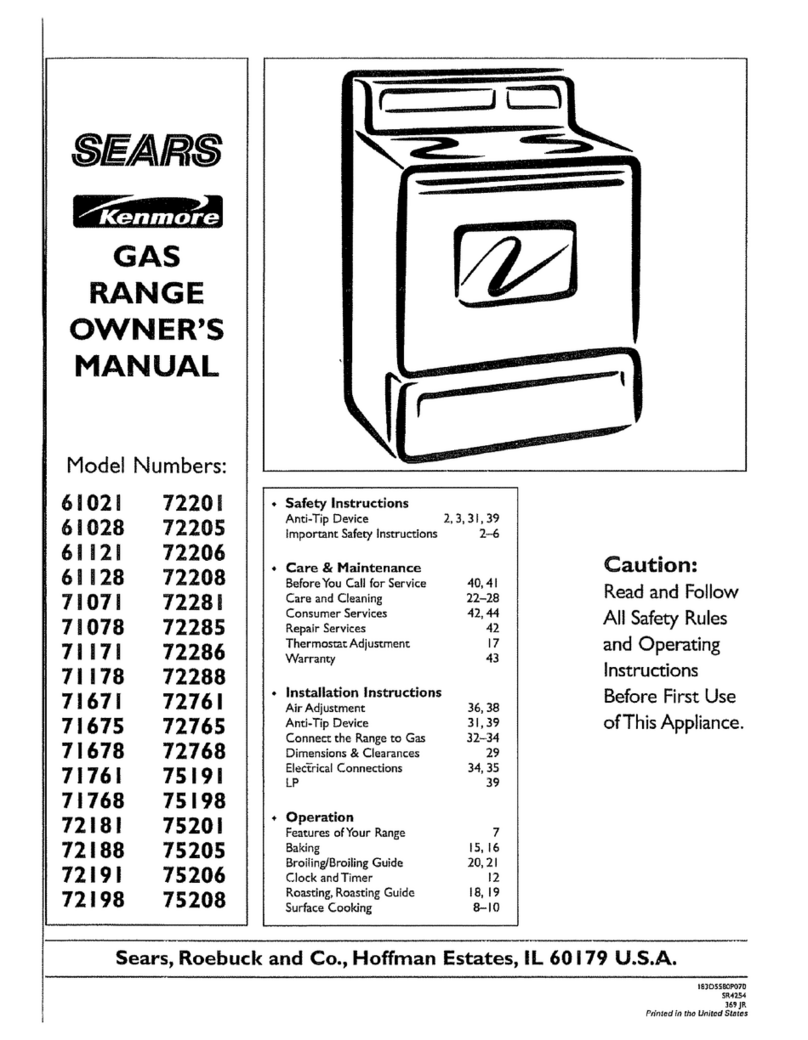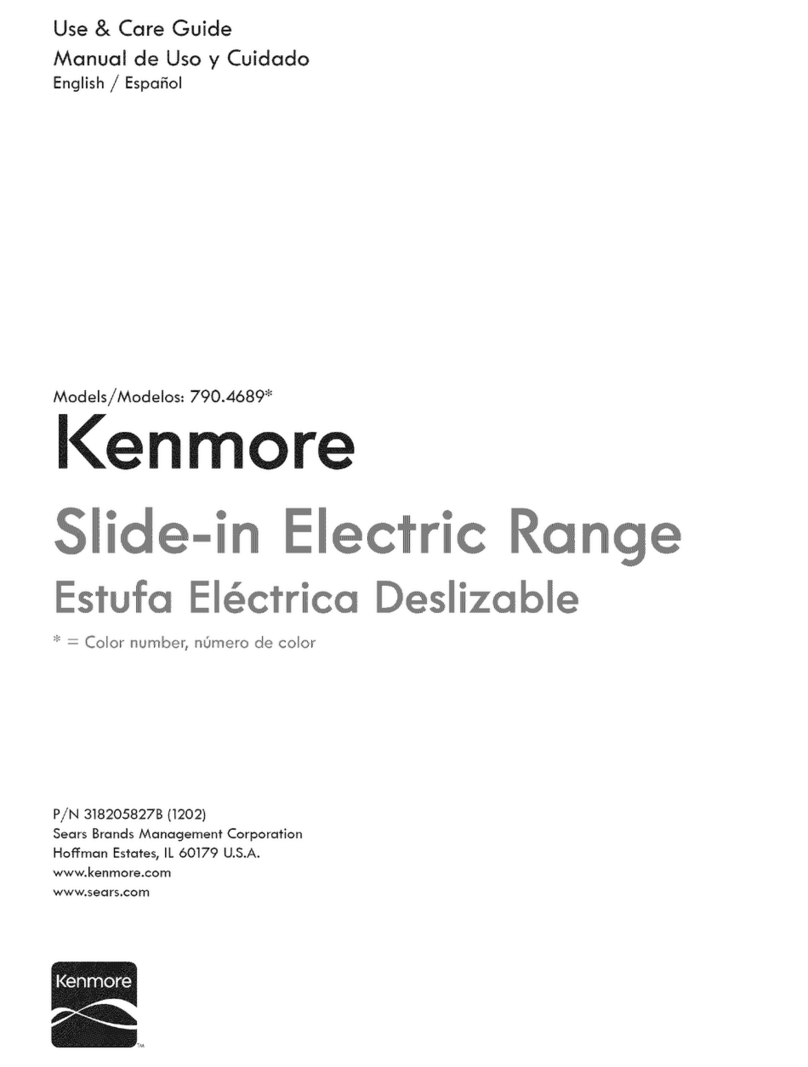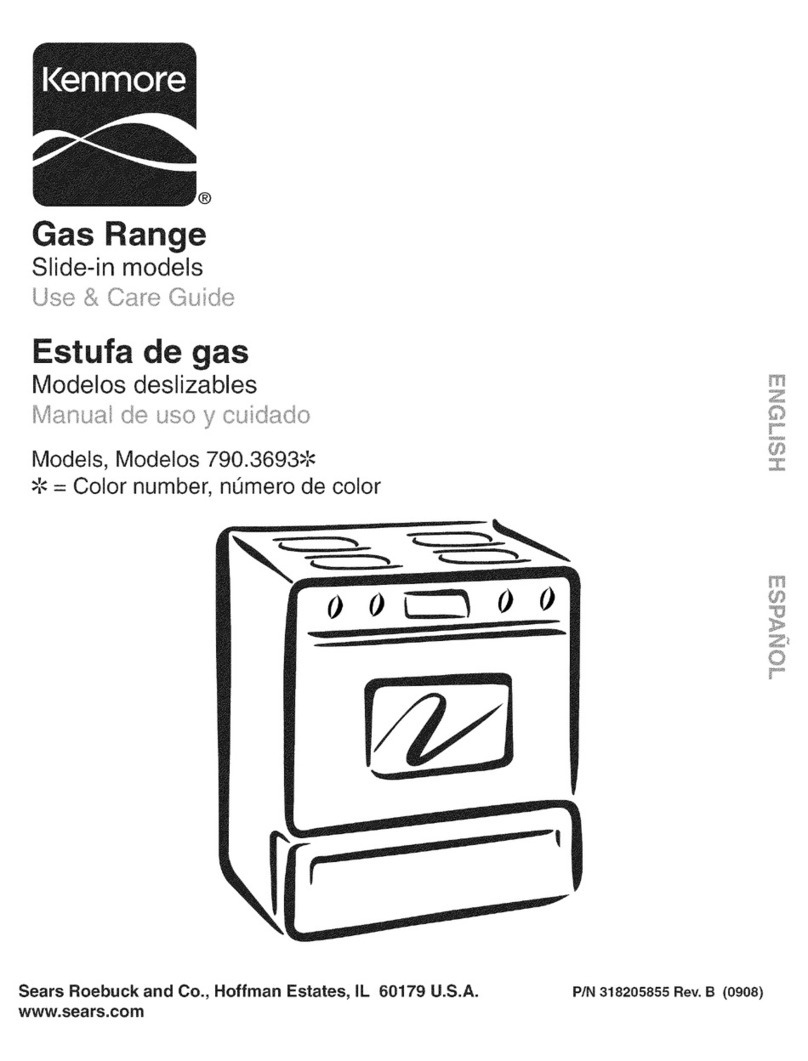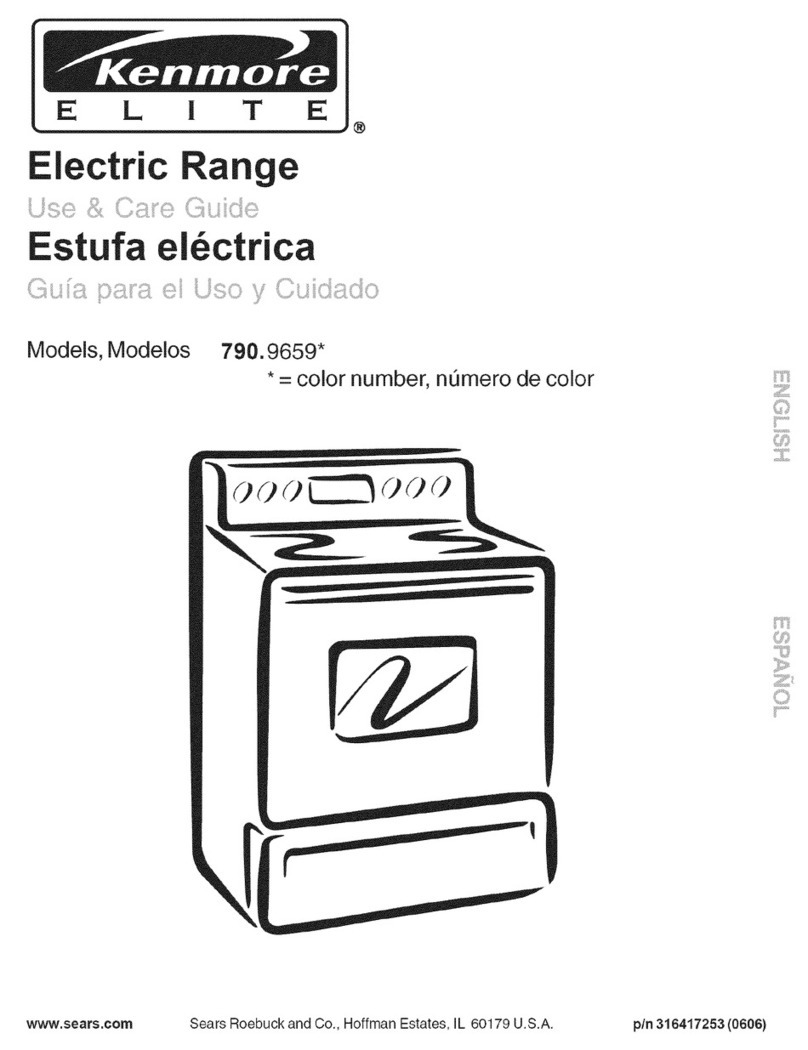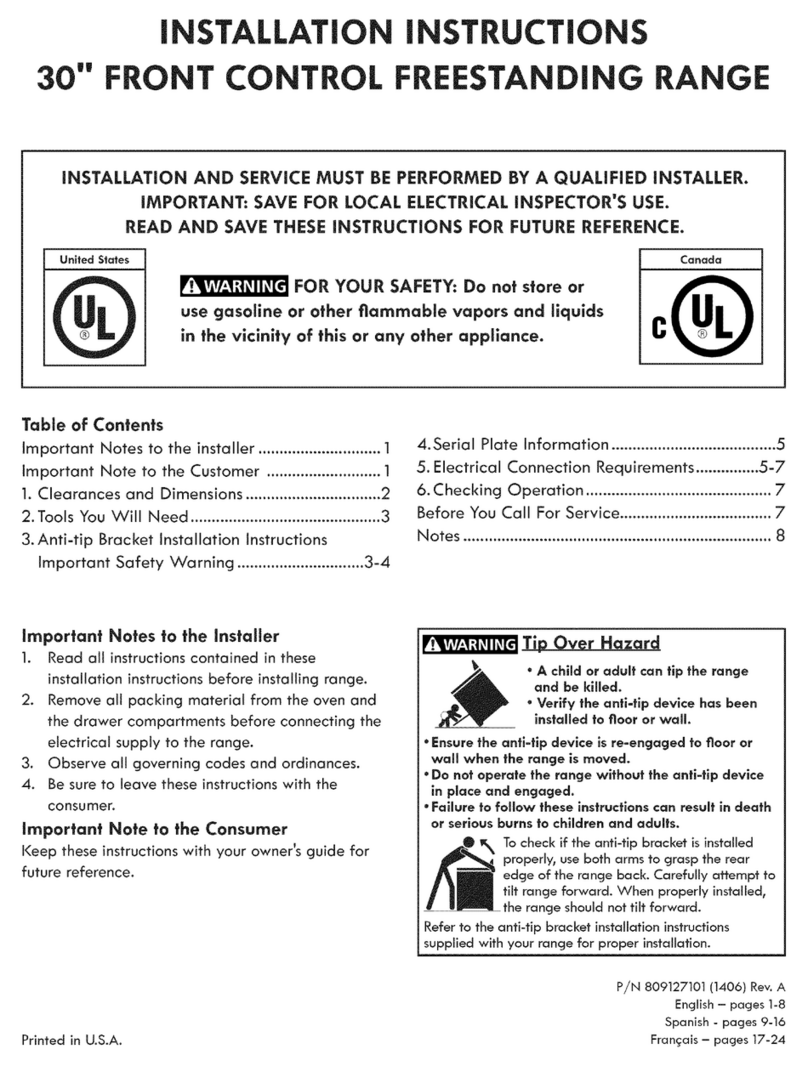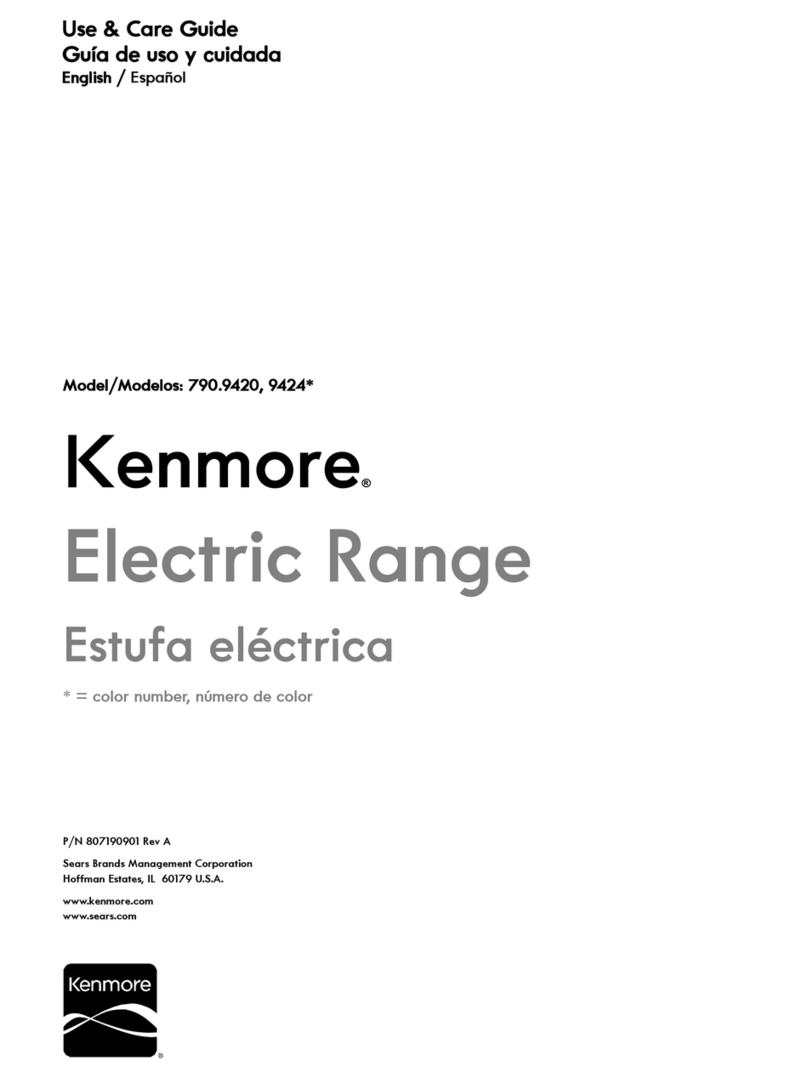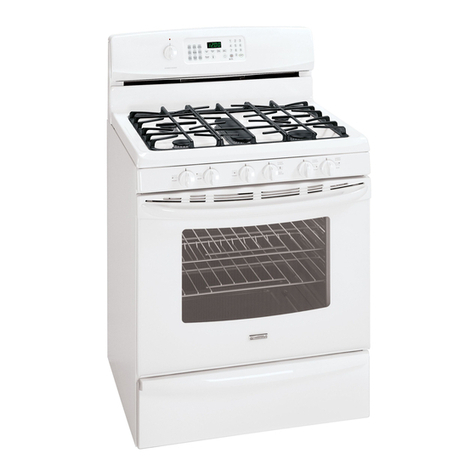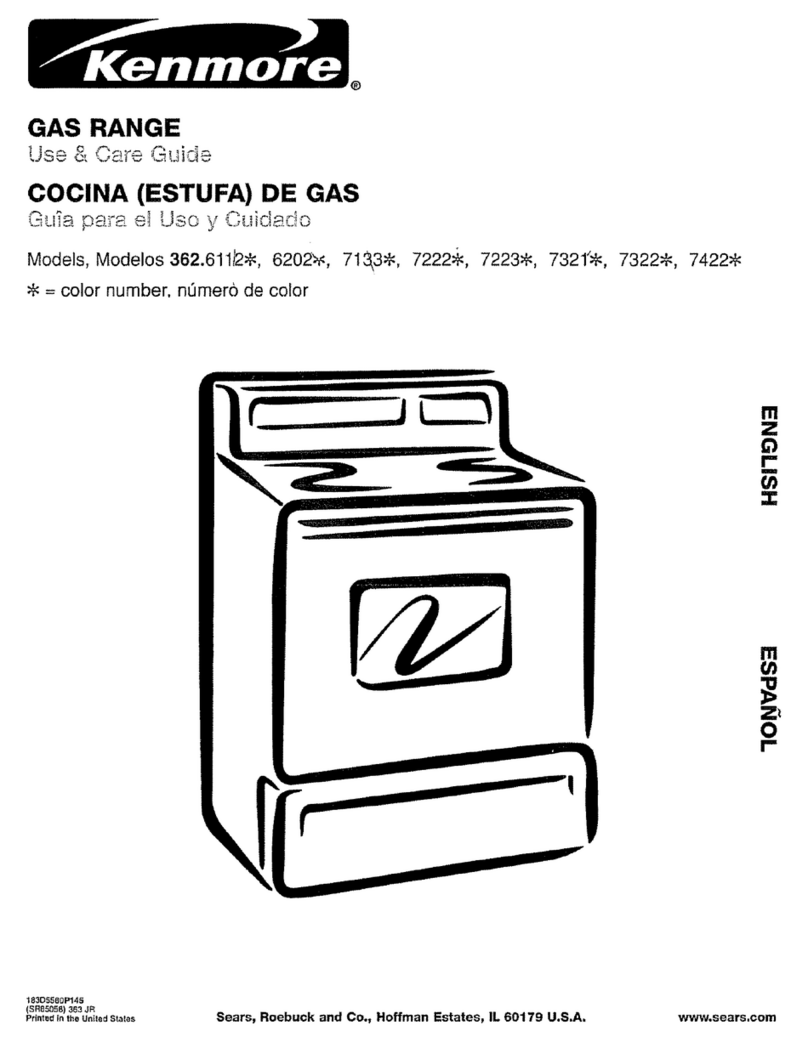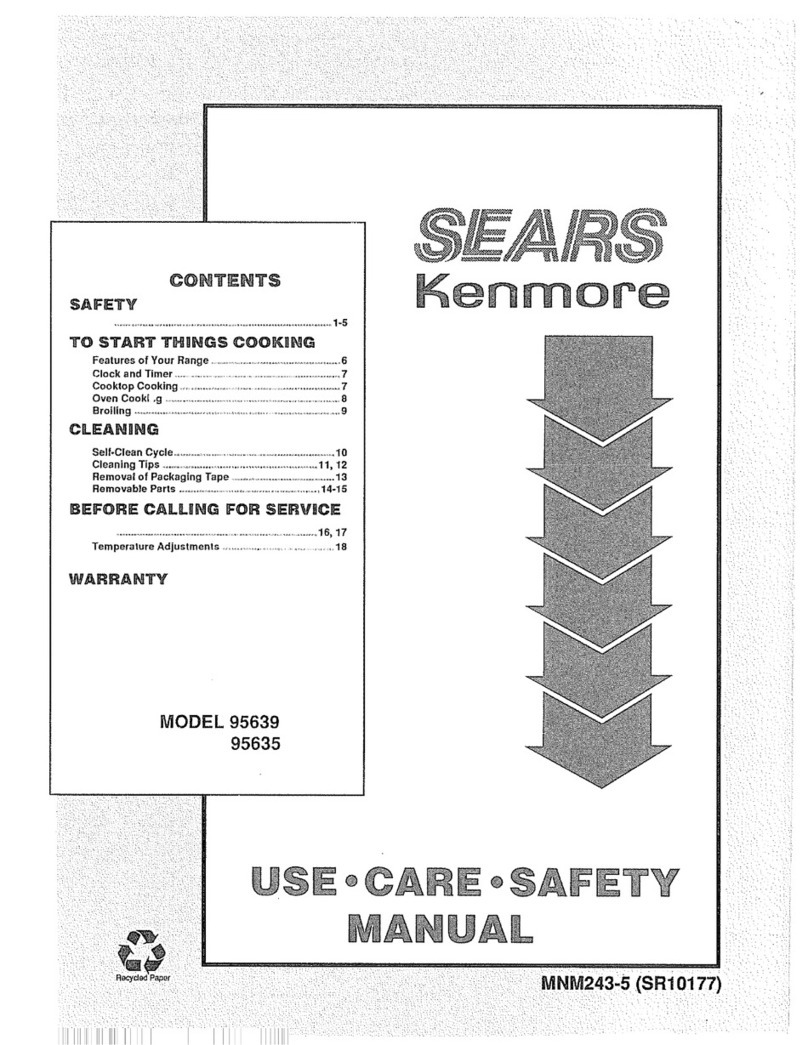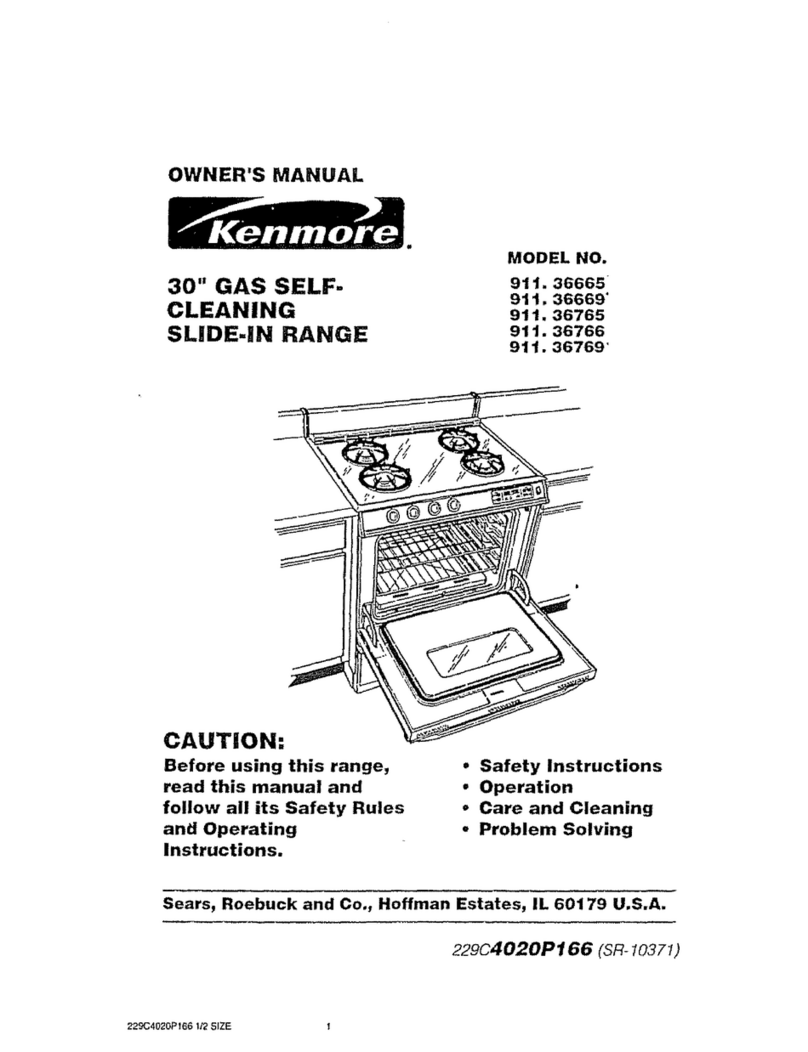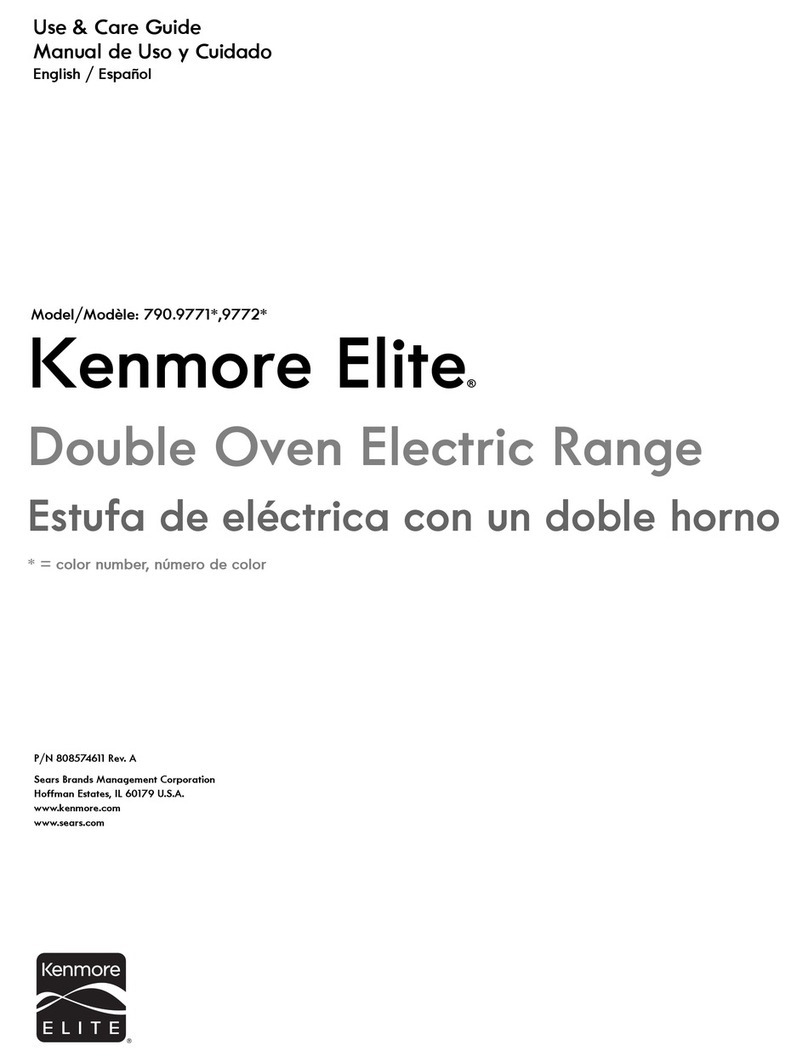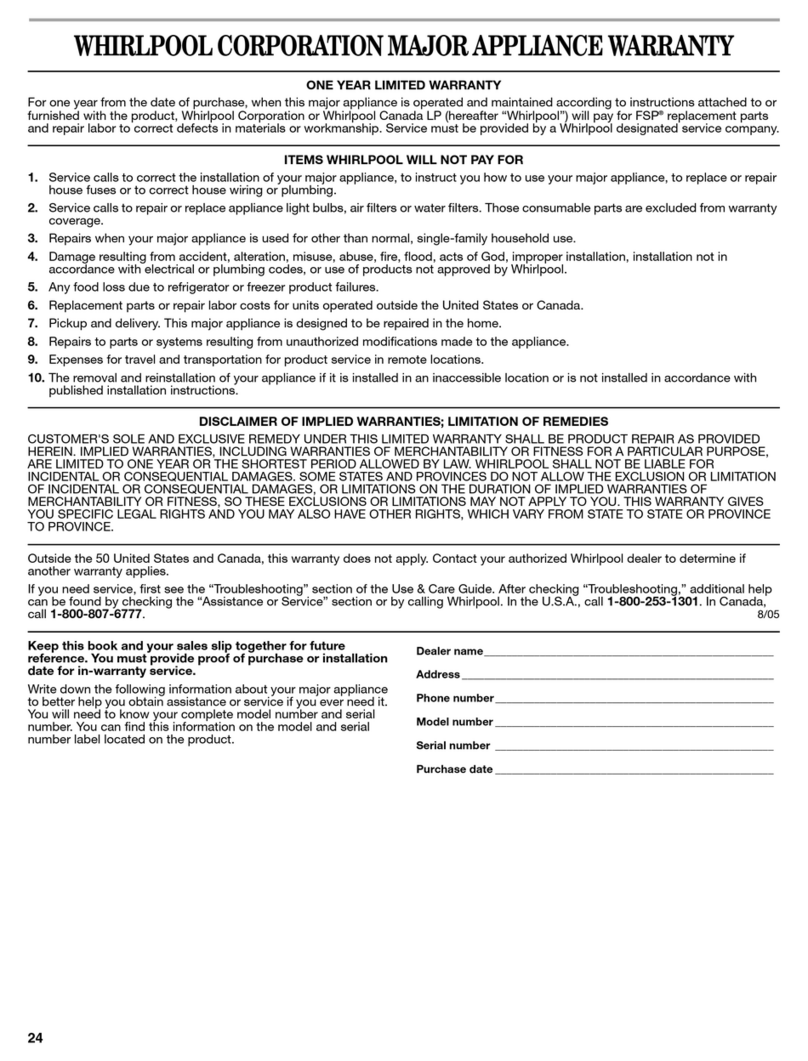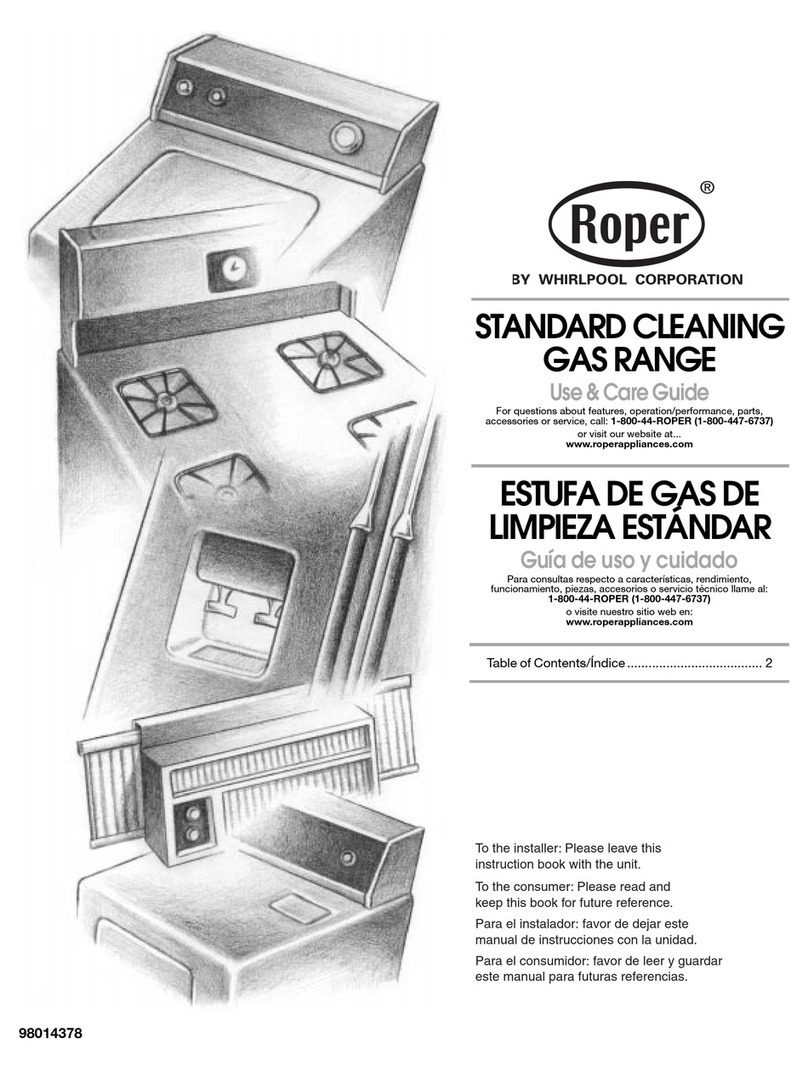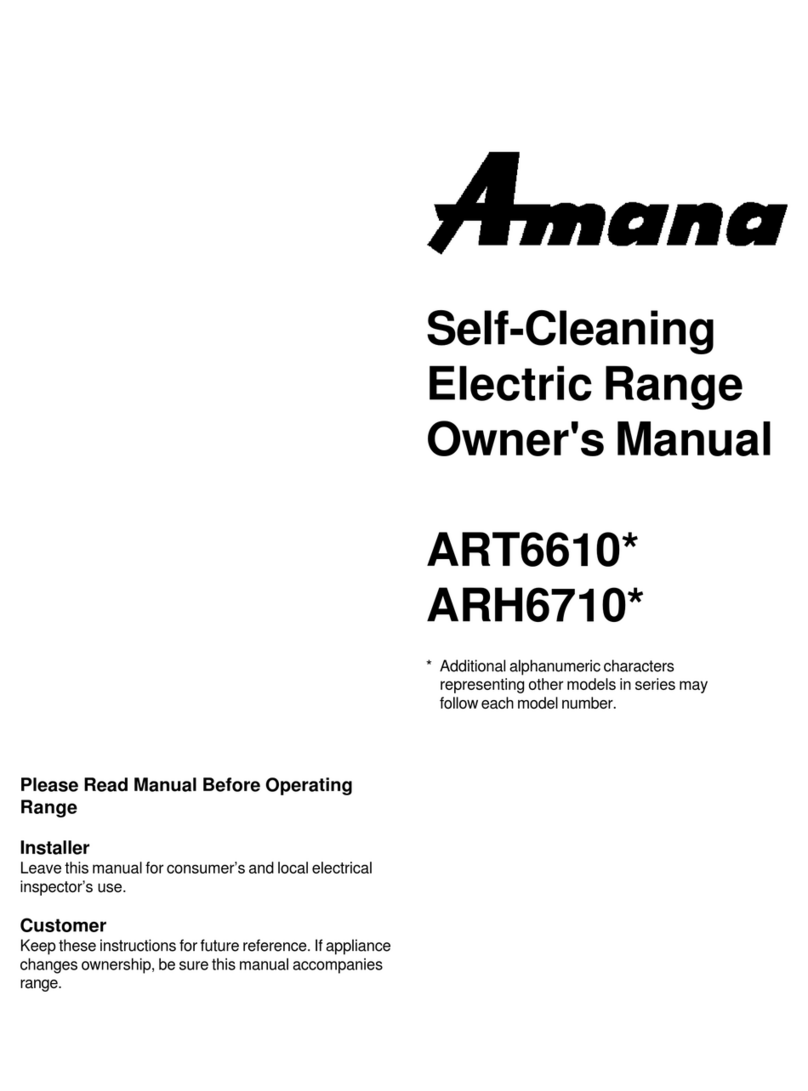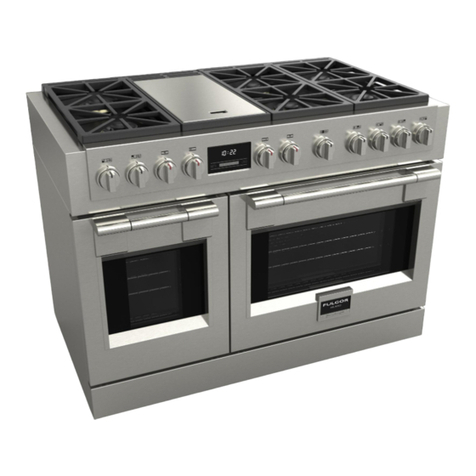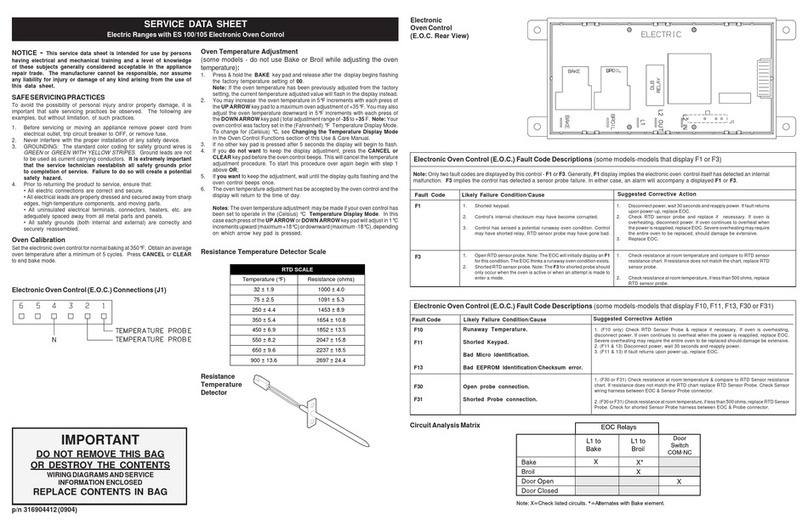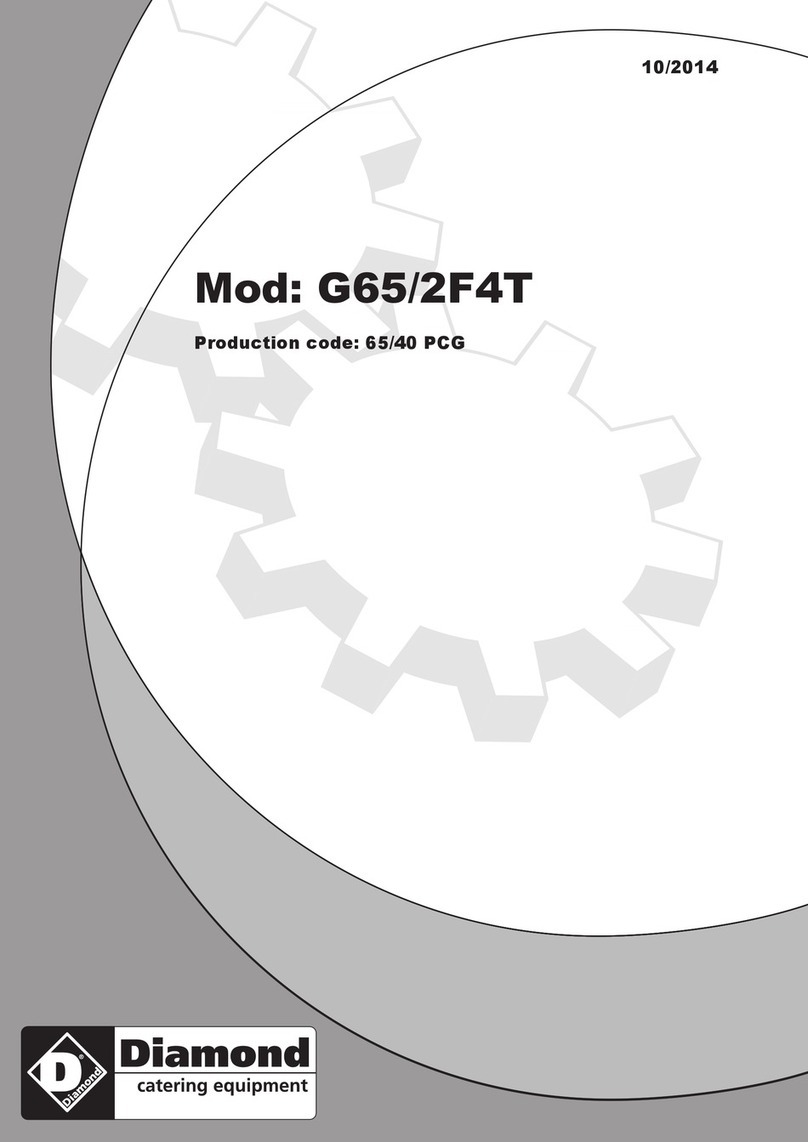IMPORTANT SAFETY INSTRUCTIONS
•When heating fat or grease, watch it closely. Fat or grease
may catch fire if allowed to become too hot,
• Use Only Dry Potholders--Moist or damp potholders on
hot surfaces may result in burns from steam. Do not let
potholders touch hot heating elements. Do not use a towel
or other bulky cloth instead of a potholder.
• Do Not Heat Unopened Food Containers--Buildup of
pressure may cause container to burst and result in injury.
•Remove the oven door from any unused range if it is to be
stored or discarded.
IMPORTANT--Do not attempt to operate the range during a
power failure. If the power fails, always turn off the range. If
the range is not turned off and the power resumes, the range
will begin to operate again. Once the power resumes, reset
the clock and oven function.
IMPORTANT INSTRUCTIONS FOR USING YOUR
COOl(TOP
•Know which knob controls each surface heating unit.
Place a pan of food on the unit before turning it on, and turn
the unit off before removing the pan.
•Use Proper Pan Size--This appliance is equipped with one or
more surface units of different sizes. Select utensils having
flat bottoms large enough to cover the surface unit heating
element. The use of undersized utensils will expose aportion
of the heating element to direct contact and may result in
ignition of clothing. Proper relationship of utensil to element
will also improve efficiency.
• Utensil Handles Should Be Turned Inward and Not Extend
Over Adjacent Surface Units--To reduce the risk of bums,
ignition of flammable materials, and spillage due to
unintentional contact with the utensil, the handle of the
utensil should be positioned so that it is turned inward, and
does not extend over adjacent surface units.
•Never Leave Surface Units Unattended at High Heat
Settings--Boilovers cause smoking and greasy spillovers that
may ignite, or apan that has boiled dry may melt.
•Do Not Immerse or Soak Removable Heating Elements--
Heating elements should never be immersed in water.
Heating elements clean themselves during normal operation.
•Make Sure Reflector Pans or Drip Bowls Are in Placer
Absence of these pans or bowls during cooking may subject
wiring or components underneath to damage.
•Protective Liners--Do not use aluminum foil to line surface
unit drip bowls, reflector pans, or oven bottom, or any other
part of the range. Only use aluminum foil as recommended
in this manual, Improper installation of these liners may
result in risk of electric shock, or fire.
•Glazed Cooking Utensils--Only certain types of glass, glass/
ceramic, ceramic, earthenware, or other glazed utensils are
suitable for cooktop service without breaking due to the
sudden change in temperature. Check the manufacturer's
recommendations for cooktop use.
IMPORTANT INSTRUCTIONS FOR USING YOUR
OVEN
•Use Care When Opening Oven Door or Warmer Drawer--
Stand to the side of the range when opening the door of a
hot oven. Let hot air or steam escape before you remove or
replace food in the oven.
•Keep Oven Vent Ducts Unobstructed. The oven vent is
located under the right rear surface element. Touching the
surfaces in this area when the oven is operating may cause
severe burns. Also, do not place plastic or heat-sensitive
items on or near the oven vent. These items could melt or
ignite.
•Placement of Oven Racks. Always place oven racks in
desired location while oven is cool. If rack must be moved
while oven is hot use extreme caution. Use potholders and
grasp the rack with both hands to reposition. Do not let
potholders contact the hot heating elements in the oven.
Remove all utensils from the rack before moving.
• Do not use the broiler pan without its insert. The broiler
pan and its insert allow dripping fat to drain and be kept
away from the high heat of the broiler.
•Do not cover the broiler insert with aluminum foil.
Exposed fat and grease could ignite,
•Cold temperatures can damage the electronic control. When
using the appliance for the first time, or when the appliance
has not been used for an extended period of time, be certain
the unit has been in temperatures above 32°F (0°C) for at
least 3 hours before turning on the power to the appliance
IMPORTANT INSTRUCTIONS FOR CLEANING
YOUR RANGE
•Clean the range regularly to keep all parts free of grease
that could catch fire. Pay particular attention to the area
underneath each surface element. Do not allow grease to
accumulate. Refer to the hood manufacturer's instructions
for cleaning.
•Kitchen cleaners and aerosols--Always follow the
manufacturer's recommended directions for use. Be
aware that excessresiduefrom cleaners and aerosols may
ignite causing damage and injury.
SELF CLEANING OVENS
• Clean in the self-cleaning cycle only the parts listed in this
Owner's Guide. Before self cleaning the oven, remove the
broiler pan and any utensils or foods from the oven.
•Do Not Use Oven Cleaners--No commercial oven cleaner or
oven liner protective coating of any kind should be used in or
around any part of the oven.
•Do Not Clean Door Gasket--The door gasket is essential for
a good seal. Care should be taken not to rub, damage or
move the gasket.
SAVI= TNES[" tNS[RIJCTIONS
4

